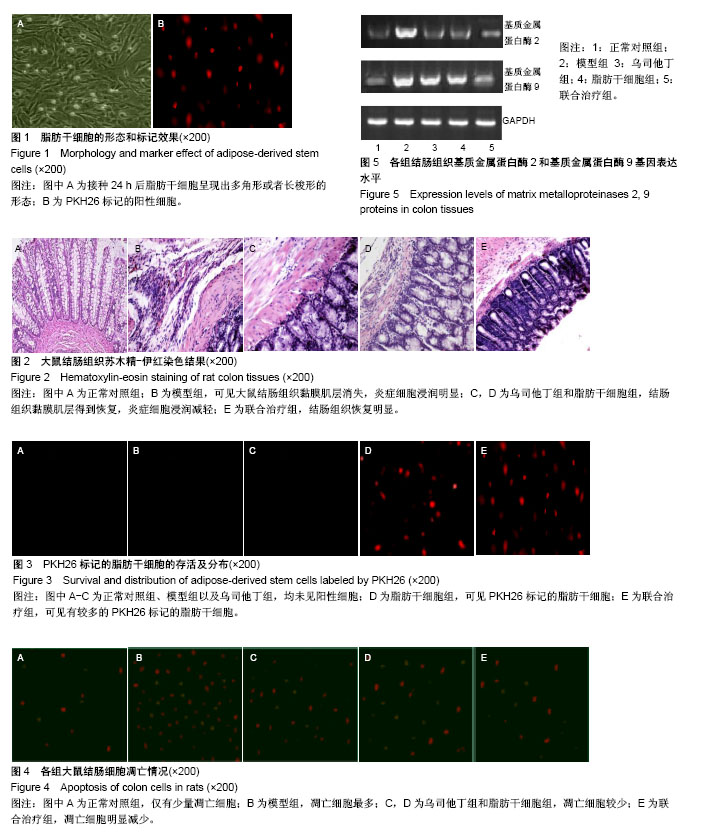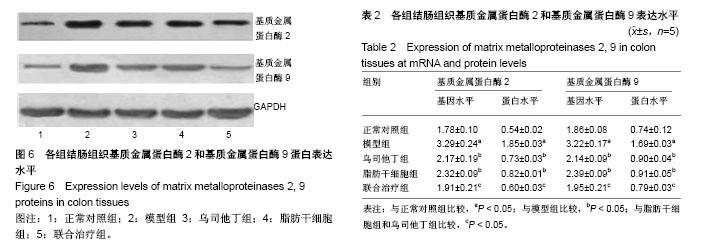| [1] 陈诗哲.肠缺血再灌注损伤研究进展[J].现代医药卫生, 2017, 33(13):1990-1992.[2] 杨牟,张居文,陈萍,等.肢体远隔缺血后适应对兔急性肠道缺血再灌注损伤的保护作用[J].中华实验外科杂志,2013,30(1):84-85.[3] James IA, Chen CL, Huang G, et al. HB-EGF protects the lungs after intestinal ischemia/reperfusion injury. J Surg Res. 2010;163(1):86-95.[4] Lenaerts K, Ceulemans LJ, Hundscheid IH, et al. New insights in intestinal ischemia-reperfusion injury: implications for intestinal transplantation. Curr Opin Organ Transplant. 2013;18(3):298-303.[5] 毛刚,吴清安,刘磊.乌司他丁的药理作用机制及临床应用进展[J].山东医药,2015,55(30):94-96.[6] 朱瑶丽,朱春丽,王小华.乌司他丁对脓毒症休克患者血常规,血乳酸及降钙素原的影响[J].西北药学杂志,2015,30(5): 618-620.[7] 张丽梅,陈炜,古旭云,等.乌司他丁对老年严重脓毒症患者心脏保护作用的临床观察[J].中国临床药理学杂志, 2014,30(12): 1089-1091.[8] Li HF, Zhao SX, Xing BP,et al.Ulinastatin suppresses endoplasmic reticulum stress and apoptosis in the hippocampus of rats with acute paraquat poisoning.Neural Regen Res. 2015;10(3):467-472.[9] 周爱国,赵瑾,欧阳军.乌司他丁对大鼠小肠缺血再灌注氧自由基抑制作用的研究[J].临床和实验医学杂志, 2013,12(15): 1182-1184.[10] 范玲玲,侯明星,都义日,等.乌司他丁对肠缺血-再灌注大鼠血清TNF-α,IL-6的影响[J].现代生物医学进展, 2013,13(31): 6011-6013.[11] 韦祎.肠道缺血再灌注损伤中乌司他丁抗炎作用新靶点—自身消化假说[D].广州:南方医科大学,2013.[12] Ma T, Sun J, Zhao Z, et al. A brief review: adipose-derived stem cells and their therapeutic potential in cardiovascular diseases. Stem Cell Res Ther. 2017;8(1):124.[13] Tabatabaei Qomi R, Sheykhhasan M. Adipose-derived stromal cell in regenerative medicine: A review. World J Stem Cells. 2017;9(8):107-117.[14] Jang S, Cho HH, Kim SH,et al.Transplantation of human adipose tissue-derived stem cells for repair of injured spiral ganglion neurons in deaf guinea pigs.Neural Regen Res. 2016;11(6):994-1000.[15] Saidi RF, Rajeshkumar B, Shariftabrizi A, et al. Human adipose-derived mesenchymal stem cells attenuate liver ischemia-reperfusion injury and promote liver regeneration. Surgery. 2014;156(5):1225-1231.[16] Chen L, Qin F, Ge M, et al. Application of adipose-derived stem cells in heart disease. J Cardiovasc Transl Res. 2014; 7(7):651-663.[17] Chen YT, Yang CC, Zhen YY, et al. Cyclosporine-assisted adipose-derived mesenchymal stem cell therapy to mitigate acute kidney ischemia-reperfusion injury. Stem Cell Res Ther. 2013;4(3):62.[18] Yip HK, Chang YC, Wallace CG, et al. Melatonin treatment improves adipose-derived mesenchymal stem cell therapy for acute lung ischemia-reperfusion injury. J Pineal Res. 2013; 54(2):207-221.[19] Czeiger D, Osyntsov A, Osyntsov L, et al. Examining the safety of colon anastomosis on a rat model of ischemia-reperfusion injury. World J Emerg Surg. 2013;8:24.[20] Chen Z, Wang G, Zhai X, et al. Selective inhibition of protein kinase C β2 attenuates the adaptor P66 Shc-mediated intestinal ischemia-reperfusion injury. Cell Death Dis. 2014;5: e1164.[21] Pirenne J. Intestinal failure: autologous reconstruction, intestinal transplantation and intestinal ischemia reperfusion injury. Curr Opin Organ Transplant. 2013;18(3):285.[22] 李佩铂,袁苑,贺翠莲.乌司他丁对大鼠肠缺血再灌注时肝组织Bcl-2、Bax蛋白表达的影响[J].中国煤炭工业医学杂志, 2013, 16(2):274-275.[23] 卢化祥,贾一韬,俞为荣,等.乌司他丁对小鼠不同程度肠缺血-再灌注损伤的作用[J].上海交通大学学报(医学版), 2014,34(5): 626-630.[24] 朱国松,罗刚健,叶志强,等.α7nAChR激动剂和乌司他丁对大鼠肠缺血再灌注后肺组织IL-1β、IL-6和TNF-α作用的比较[J].实用医学杂志,2013,29(8):1231-1233.[25] 邵壮.乌司他丁对大鼠肢体缺血再灌注损伤的保护作用及其机制[D].北京:中国人民解放军医学院,2014.[26] 刘彦西,高大宽,马亚玲,等.乌司他丁对大鼠脑缺血再灌注损伤后的保护作用及其机制研究[J].现代生物医学进展, 2015,15(23): 4462-4466.[27] 范玲玲,侯明星,都义日,等.乌司他丁对肠缺血--再灌注损伤大鼠血清 SOD 活性及 MDA 水平的影响[J].山东医药, 2014,54 (10):39-40.[28] Yip HK, Chang YC, Wallace CG, et al. Melatonin treatment improves adipose-derived mesenchymal stem cell therapy for acute lung ischemia-reperfusion injury. J Pineal Res. 2013; 54(2):207-221.[29] Chang CL, Sung PH, Sun CK, et al. Protective effect of melatonin-supported adipose-derived mesenchymal stem cells against small bowel ischemia-reperfusion injury in rat. J Pineal Res. 2015;59(2):206-220.[30] Lee SC, Kim JO, Kim SJ. Secretome from human adipose-derived stem cells protects mouse liver from hepatic ischemia-reperfusion injury. Surgery. 2015;157(5):934-943.[31] Jang HR, Park JH, Kwon GY, et al. Effect of preemptive treatment with human umbilical cord blood-derived mesenchymal stem cells on the development of renal ischemia-reperfusion injury in mice. Am J Physiol Renal Physiol. 2014;307(10):F1149-1161.[32] Shen ZY, Zhang J, Song HL, et al. Bone-marrow mesenchymal stem cells reduce rat intestinal ischemia-reperfusion injury, ZO-1 downregulation and tight junction disruption via a TNF-α-regulated mechanism. World J Gastroenterol. 2013;19(23):3583-3595.[33] 刘明.胎盘间充质干细胞对大鼠脑缺血再灌注损伤Nogo-A及NgR的影响[D]. 青岛:青岛大学,2015.[34] Li Y, Xu W, Cheng LY.Adipose-derived mesenchymal stem cells accelerate nerve regeneration and functional recovery in a rat model of recurrent laryngeal nerve injury.Neural Regen Res. 2017;12(9):1544-1550.[35] Li P, Zhang R, Sun H, et al. PKH26 can transfer to host cells in vitro and vivo. Stem Cells Dev. 2013;22(2):340-344.[36] 郭凯,罗燕,李涛,等.人脂肪间充质干细胞向视网膜色素上皮样细胞的诱导分化及其在体应用研究[J].中华实验眼科杂志, 2015 , 33(9):794-797.[37] 王炳杰,胡延伟,赵叶芳,等.谷氨酰胺联合脐血间充质干细胞移植在大鼠肠缺血再灌注损伤中的作用[J].中国比较医学杂志, 2016, 26(10):25-31.[38] Maradni A, Khoshnevisan A, Mousavi SH, et al. Role of matrix metalloproteinases (MMPs) and MMP inhibitors on intracranial aneurysms: a review article. Med J Islam Repub Iran. 2013;27(4):249-254.[39] Liu Y, Xu B, Wu N, et al. Association of MMPs and TIMPs With the Occurrence of Atrial Fibrillation: A Systematic Review and Meta-analysis. Can J Cardiol. 2016;32(6): 803-813.[40] Pandey AK, Bhattacharya P, Shukla SC,et al.Resveratrol inhibits matrix metalloproteinases to attenuate neuronal damage in cerebral ischemia: a molecular docking study exploring possible neuroprotection.Neural Regen Res. 2015;10(4):568-575.[41] 胡光强,杜曦,陈碧琼,等.橄榄苦苷对大鼠局灶性脑缺血再灌注损伤和炎性反应的作用[J].神经解剖学杂志,2016,32(1):82-86.[42] 孟星.脑脉泰对血管性痴呆大鼠脑白质的保护作用及机制探索[D].长春:吉林大学,2015.[43] 李兵,易良,徐伦山,等.MMP1 MMP2 MMP9与TIMP-1 TIMP-2检测对脑胶质瘤的诊断作用分析[J].中国实用神经疾病杂志, 2013, 16(23):4-6.[44] 龚霞.压力性尿失禁患者宫骶韧带中MMPs/TIMPs表达量、细胞外基质成分含量与细胞凋亡的关系[J].海南医学院学报, 2017, 23(15):2113-2115. |
.jpg)


.jpg)
.jpg)